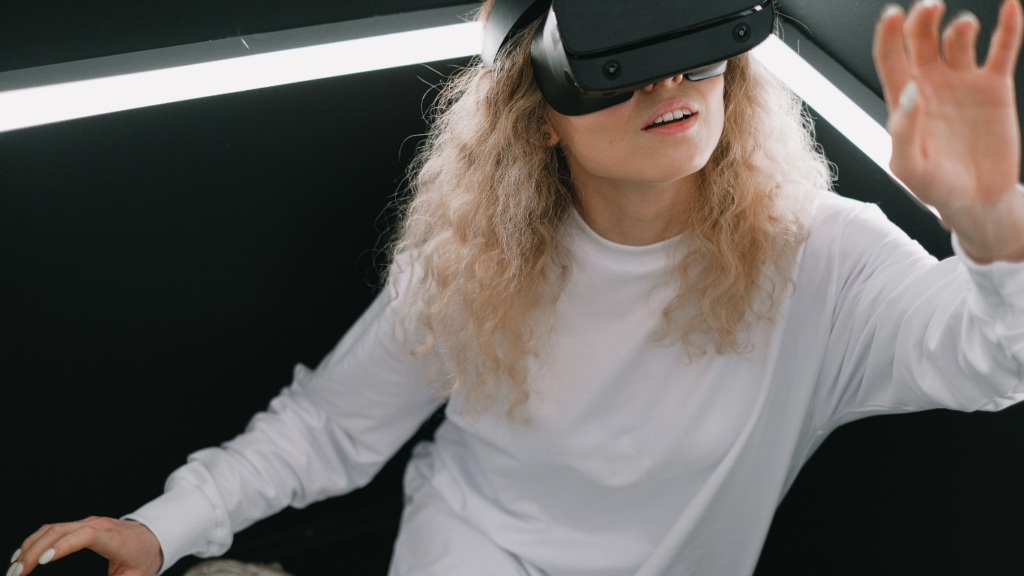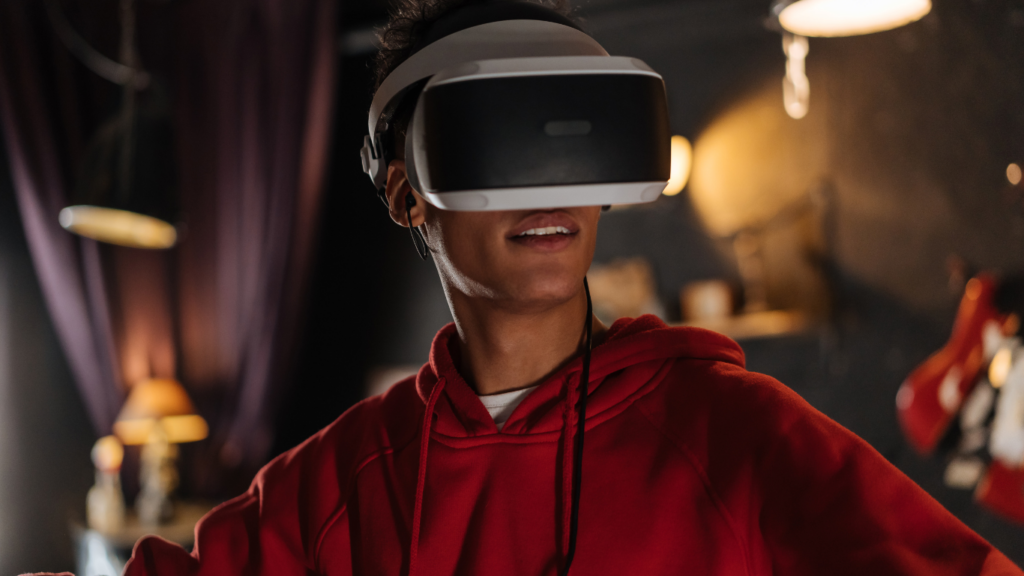Virtual Reality (VR) controllers have revolutionized the way we interact with digital worlds, bringing a new level of immersion and realism to virtual environments. As a passionate advocate for cutting-edge technology, I’ve witnessed firsthand the impact of VR controllers on enhancing user experiences.
From wielding a virtual sword to painting in 3D space, these controllers offer a hands-on approach that blurs the line between the physical and digital realms.
In this article, I’ll delve into the fascinating world of VR controllers and explore how they are reshaping the way we engage with virtual environments. Whether you’re a seasoned VR enthusiast or new to the concept, understanding the capabilities of these controllers is key to unlocking the full potential of immersive experiences.
Join me on this journey as we uncover the innovative features and functionalities that make VR controllers essential tools for navigating the ever-expanding virtual landscape.
Evolution of VR Controllers
Exploring the Evolution of VR Controllers, I delve into the advancement of these pivotal tools that have revolutionized interactions within virtual environments.
Introduction of Early VR Controllers
Beginning with the introduction of early VR controllers, developers sought innovative ways to bridge the gap between users and virtual worlds. These rudimentary tools laid the foundation for the immersive experiences we enjoy today.
Integration of Motion Tracking Technology
With the integration of motion tracking technology, VR controllers took a significant leap forward. This advancement enabled precise tracking of hand movements and gestures, enhancing user engagement and control within virtual environments.
Enhancements in Haptic Feedback
The evolution of VR controllers also saw significant enhancements in haptic feedback technology. By simulating the sense of touch through vibrations and feedback mechanisms, users could feel virtual interactions with greater realism and immersion.
Introduction of Finger Tracking Capabilities
Another milestone in the evolution of VR controllers was the introduction of finger tracking capabilities. This innovation allowed users to interact more naturally within virtual environments, making gestures and hand movements more intuitive and lifelike.
Wireless Connectivity and Ergonomic Designs
Advancements in wireless connectivity and ergonomic designs further improved the usability and comfort of VR controllers. Wireless setups reduced constraints on movement, while ergonomic designs enhanced user comfort during extended virtual sessions.
Incorporation of Adaptive Triggers and Buttons
The incorporation of adaptive triggers and buttons added a new dimension to VR controllers, offering variable resistance and feedback based on user interaction. This feature increased immersion by providing tactile responses that mirrored real-world scenarios.
Future Prospects and Innovations
Looking ahead, the future of VR controllers holds promising prospects for further innovation. From augmented reality integrations to enhanced biometric feedback, the evolving landscape of VR controllers continues to shape the future of immersive experiences in virtual environments.
Types of VR Controllers
Handheld Controllers
Handheld controllers are a common type of VR input device that offer users a tangible way to interact with virtual environments. These controllers typically feature buttons, triggers, and joysticks for navigation and manipulation within VR spaces.
They provide a familiar gaming console-like experience, making them accessible to a wide range of users. Handheld controllers are versatile tools that enable precise movements and interactions, enhancing the overall immersive experience in virtual worlds.
Finger Tracking Controllers
Finger tracking controllers represent a cutting-edge advancement in VR technology, allowing users to interact with virtual environments using natural hand movements and gestures. These controllers leverage sensors to track the movements of individual fingers, offering a more intuitive and realistic way to engage with digital worlds.
By enabling users to point, grab, and manipulate virtual objects with their fingers, finger tracking controllers enhance immersion and dexterity in VR experiences. This technology opens up new possibilities for interactive storytelling, spatial reasoning, and creative expression in virtual spaces.
Advantages of Using VR Controllers
Exploring the benefits of utilizing VR controllers enhances the interaction and engagement levels in virtual reality experiences. These controllers revolutionize user experiences by offering a range of advantages.
- Enhanced Immersion: VR controllers contribute to heightened immersion levels by allowing users to interact more naturally with virtual environments. The intuitive controls mimic real-world movements, making the experience more realistic and engaging.
- Precise Interactions: With VR controllers, users can engage in precise interactions within the virtual world. The controllers’ motion tracking technology enables accurate movements, enhancing the user’s ability to manipulate objects and navigate virtual spaces effectively.
- Improved User Engagement: The use of VR controllers enhances user engagement by offering tactile feedback through haptic technology. This feedback provides users with a sense of touch, making interactions more lifelike and immersive.
- Versatility in Gameplay: VR controllers offer versatility in gameplay by providing a wide range of interaction possibilities. From wielding virtual weapons to performing intricate tasks, the controllers enable users to engage with virtual environments in various ways.
- Intuitive Controls: The ergonomic design of VR controllers ensures that users can interact comfortably for extended periods. The intuitive button layout and ergonomic grip enhance usability, making it easier for users to navigate virtual worlds seamlessly.
- Enhanced Realism: VR controllers add a layer of realism to virtual experiences by incorporating features such as adaptive triggers and buttons. These features simulate real-world interactions, making the virtual environment feel more authentic and immersive.
- Seamless Integration: VR controllers seamlessly integrate with VR headsets, providing a complete immersive experience for users. The seamless connection between the controller and the virtual environment enhances the overall immersion, making interactions feel natural and intuitive.
Challenges in VR Controller Development
Exploring the realm of Virtual Reality (VR) controllers, I delve into the intricate challenges that developers face in pushing the boundaries of user interaction in virtual environments. These challenges are pivotal in shaping the future of VR technology and ensuring immersive and seamless experiences for users.
- Precision Tracking: Achieving precise and accurate motion tracking remains a fundamental challenge in VR controller development. Ensuring that users’ movements are accurately represented in the virtual space without any lag or discrepancies is crucial for a seamless and immersive experience.
- Haptic Feedback Innovation: Enhancing haptic feedback technology in VR controllers poses a significant challenge. Developers strive to create realistic tactile sensations that mimic real-world interactions, adding depth and immersion to virtual experiences.
- Ergonomic Design: Crafting ergonomic and user-friendly designs for VR controllers is a constant challenge. Developers must balance comfort, functionality, and aesthetics to create controllers that users can hold for extended periods without fatigue while maintaining ease of use and accessibility.
- Battery Life Optimization: Maximizing battery life while ensuring optimal performance is a persistent challenge in VR controller development. Balancing power consumption with functionality is essential to provide uninterrupted gameplay and user experiences.
- Compatibility and Connectivity: Ensuring seamless compatibility and connectivity with various VR headsets and platforms poses a challenge for developers. Creating controllers that can adapt to different hardware and software configurations while maintaining performance standards is crucial for user convenience.
- Development Costs: Managing development costs without compromising on the quality and features of VR controllers is a significant challenge. Balancing innovation with affordability is essential to make these technologies accessible to a wider audience.
- User Experience Enhancement: Continuously enhancing user experiences through innovative features and intuitive controls is a key challenge in VR controller development. Developers strive to create controllers that not only meet technical requirements but also elevate the overall user experience in virtual environments.
By addressing these challenges head-on, developers can shape the future of VR controller technology, driving innovation in user interaction and paving the way for more immersive and engaging virtual experiences.



